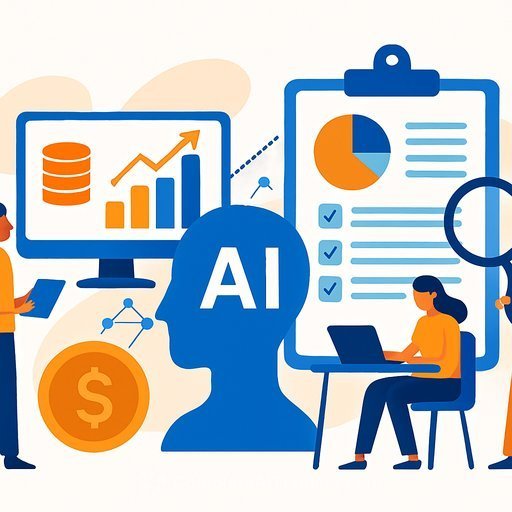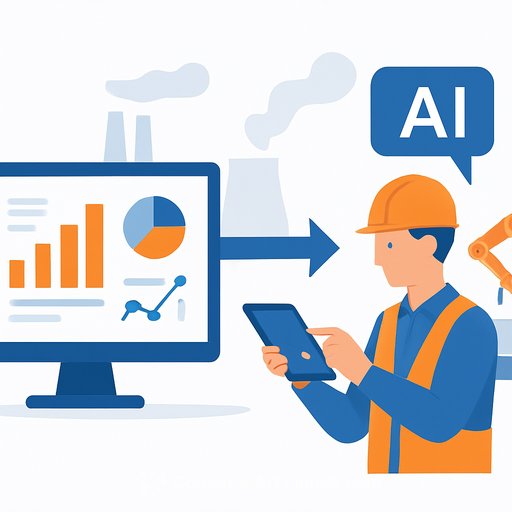Unified, real-time data is the real key to enterprise AI success
Billions are going into AI. Most projects still stall because the data isn't ready. Gartner estimates that six in ten AI initiatives without AI-ready data will be abandoned. The rule is old but accurate: garbage in, garbage out.
The quiet shift at work
AI use at work has nearly doubled from 20% to 40% in two years, according to a Gallup poll. Use cases are everywhere: hospitals accelerating detection and diagnosis, insurers targeting billions in savings, financial agents scanning markets for fraud and risk, and even fast food chains using virtual recruiters to slash hiring time.
The bigger move is how work gets done. Agents and copilots will sit in front of your systems, orchestrate workflows, generate reports, and surface insights. Instead of toggling across apps, your team will ask an agent-and expect a correct, auditable answer. That only happens with accurate, connected, real-time data.
The hidden AI bottleneck for Operations
The average large enterprise runs hundreds of systems-some run thousands. Customer data in one platform, finance in another, HR elsewhere, and operational data stuck in spreadsheets. When an AI agent pulls from this patchwork-if it can at all-you get inconsistent, outdated, or wrong answers.
Executives agree AI can transform performance, yet most admit they lack the data quality to power it. That's why poor data quality has become the top blocker to AI adoption-and a material risk because outputs become unpredictable.
The new rules of enterprise data
We're entering an era where agents generate content, make decisions, and learn continuously. The old rules of data don't apply. Here's what does:
- Connected: Link data across functions-customer, finance, supply chain, HR, and operations-into a consistent view.
- Real time: Stop relying on yesterday's spreadsheets. Stream changes as they happen and reduce latency to minutes or seconds.
- Structured for AI: Standardize entities and schemas so models and agents can consume, reason, and act with context.
Ignore these rules and you'll build advanced agents on quicksand. Follow them and AI becomes repeatable, auditable, and scalable.
What good looks like
Mastercard: Integrated fragmented data across acquisitions to create a single view of customers, merchants, and products. That foundation fuels better experiences and sharper decisions.
L'Oréal: Treated data as a growth asset. Cleaned and connected it to drive direct-to-consumer strategies and smarter execution. The edge didn't come from the flashiest model-it came from reliable data.
An action plan Operations can run this quarter
- Pick one high-value workflow. Examples: order-to-cash exceptions, inventory allocation, claims triage, field service dispatch, fraud investigation.
- Map the decisions and the data. What questions must the agent answer? List the systems, spreadsheets, and owners behind each answer.
- Create a trusted core. Stand up or expand master data for customers, products, suppliers, and locations. Assign data owners and SLAs.
- Go real time where it matters. Use change data capture and event streams to keep golden records fresh. Eliminate manual file drops.
- Standardize for AI. Define common schemas, IDs, and taxonomies. Keep a catalog with lineage so every answer is traceable.
- Build the serving layer. Expose clean data to agents via APIs, a feature store, or a retrieval layer integrated with your vector database.
- Instrument quality. Track freshness, completeness, accuracy, and duplicate rates. Set thresholds that block bad data from production.
- Close the loop. Capture agent feedback, user corrections, and outcome data to improve records and prompts over time.
Risk controls Ops leaders should insist on
- Access control by role and purpose. Limit who sees what, and log every retrieval.
- PII and sensitive data handling. Classify, mask, and tokenize where required.
- Human-in-the-loop on material actions. Approvals for payouts, pricing changes, supplier switches, or term updates.
- Audit trails and lineage. Every answer should show data sources, timestamps, and transformations.
- Monitoring and drift checks. Watch for quality decay, schema changes, and model drift that break decisions.
What to measure
- Time-to-answer: How long an agent takes to provide a decision-ready output.
- Decision cycle time: From request to approved action for a target workflow.
- Data freshness SLA: Max acceptable age of input data per decision type.
- Golden ID coverage: Percent of records resolved to a single customer, product, or supplier ID.
- Error and rework rates: Frequency of agent answers that require correction.
- Business lift: Exception rate reduction, faster cash conversion, lower stockouts, or fewer claims touchpoints.
Why this is an Operations problem
Your team owns the flow of work. If data is fragmented, the agent's output is fragmented. If data is late, the agent's decision is late. AI will sit in the middle of your processes, so the data foundation must be owned and enforced by Operations with IT partnership.
The path forward
Winning with enterprise AI isn't about picking the "right" LLM. It's about preparing the ground they run on. Unified, trusted, and real-time data lets agents deliver accurate insights, automate workflows, and scale decisions across the business.
Keep the focus tight: one workflow, one set of decisions, one data foundation that proves its value. Then expand.
Next steps
- Identify a workflow where stale or siloed data is slowing the team down.
- Assign data owners and set freshness and quality SLAs.
- Pilot an agent only after the data foundation for that workflow is live.
If you're upskilling your Ops team on data readiness and AI agents, explore our practical programs: Courses by job and Automation resources.
Your membership also unlocks:






